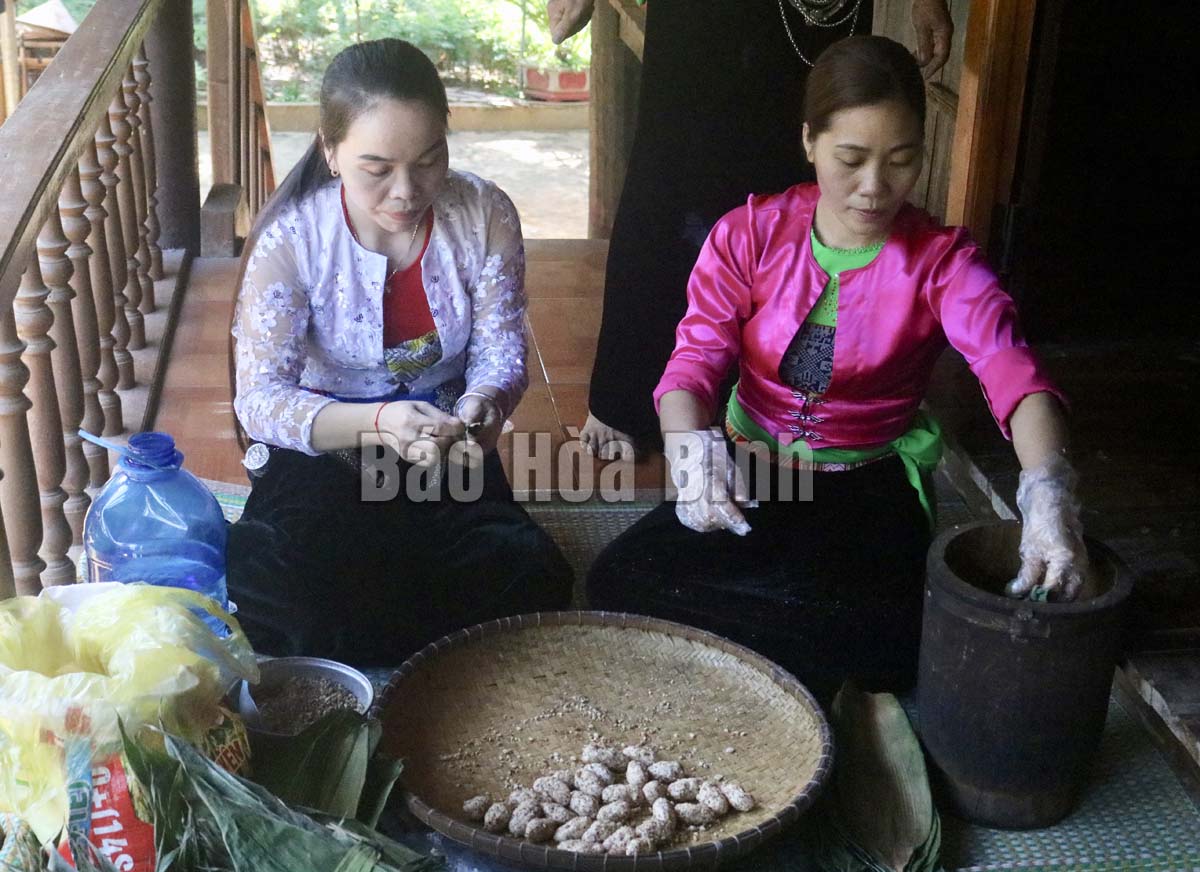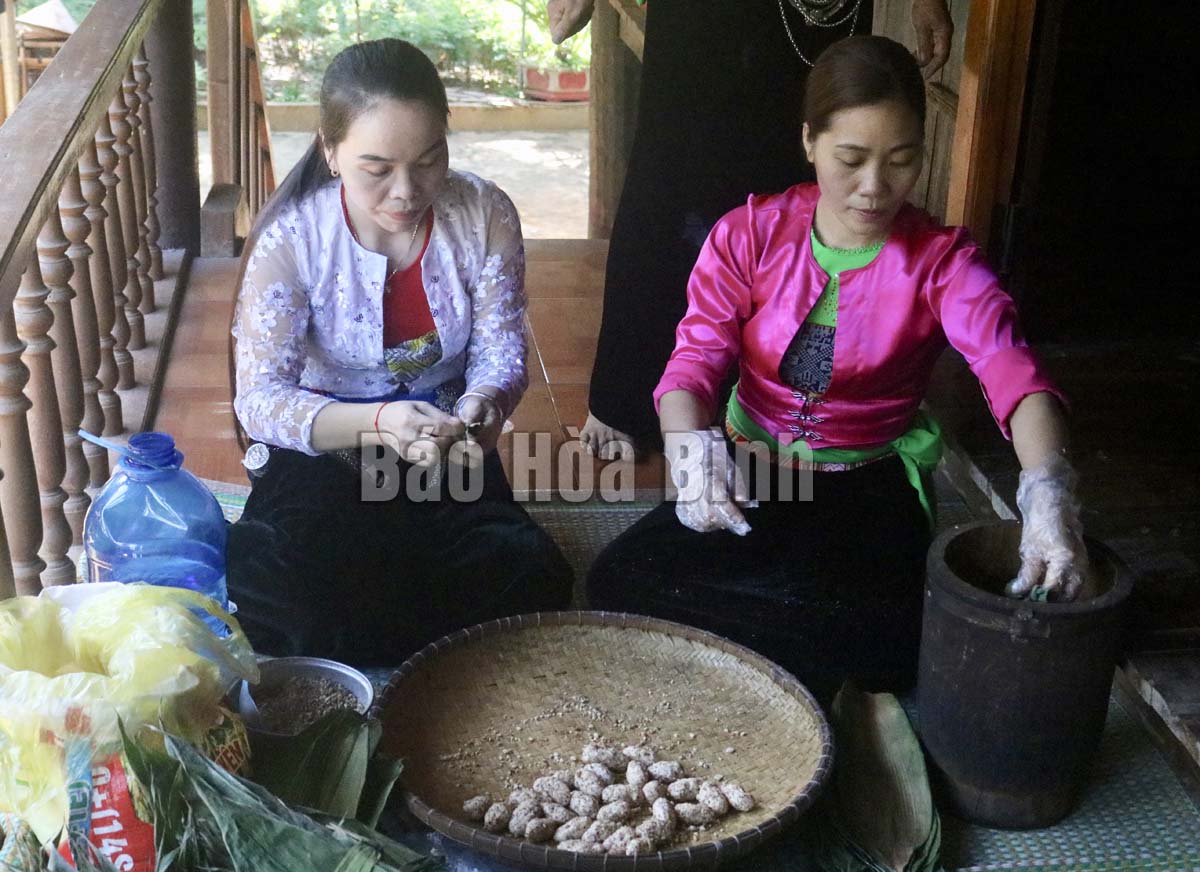



The people in Muong Vo, Nhan Nghia commune (Lac Son) are making Uoi cakes on Independence Day.
Every year, on the occasion of Independence Day, the families in Muong Vo, Nhan Nghia commune (Lac Son) grind sticky rice flour, pick leaves, prepare peanuts and sesame to make Uoi cakes, a unique traditional cake, which is indispensable on this day. Together with Ms. Quach Thi Khet from Vo Giua hamlet, Nhan Nghia commune go the garden to pick up the leaves for packing the cakes. Choosing large, beautiful leaves, without decay or tear, Ms. Khet said: In the Muong language, Uoi cakes are pronounced "peeng uoi” or the husband & wife cakes. No one knows when Uoi cake appeared, they only know that many generations of children born in this Muong Vo land have been associated with the hot, smoky Uoi cakes pouring out onto the tray emitting a fragrant aroma. In the past, when life was still very difficult, the children in the family only looked forward to Independence Day to enjoy Uoi cakes. Gradually, this has become a precious gift for the guests from afar when coming to Muong Vo on this occasion.
The main ingredients to make Uoi cakes include sticky rice, lentils, peanuts, sesame, and leaves (in many places banana leaves are used). Normally, the delicious and sticky Uoi cakes need the delicious sticky rice. Before wrapping, the sticky rice is washed thoroughly, soaked overnight until the sticky rice is soft and then ground into a fine powder. Regarding the kernel, each Muong region in the province has a different way of making kernels. If Muong people in the wards of Hoa Binh city often make cakes stuffed with pork and green beans, the peopel in Cong Hoa (Lac Son) region prefer to eat cakes with crushed roasted peanuts and add a little salt. In Muong Dong (Kim Boi), Muong Thang (Cao Phong), people often knead the power with ripe bananas so that the cake is both sweet and fragrant. After the ingredients are carefully prepared, the process of wrapping the cake begins. Two dough balls with the kernels inside are placed at opposite ends in the leaf, it is quickly rolled up, twisted quickly, doubling and the cake is fixed with a tie, or they make use of the excess leaf tail to tie the cake, followed by cutting to make the cake more beautiful.
The cakes are put in the trunk for more than 1 hour and it will produce a delicious batch of cakes. The flavor of banana leaves, bergamot leaves mixed with the flavor of the fragrant sticky rice, the fleshy kernel of green bean and meat, melting in the mouth creates an unforgettable impression. Mr. Pham Quoc Duyet from Dung Tha hamlet, Thu Phong commune (Cao Phong) said: The people in Cao Phong often have the custom of making Uoi cakes on Tet holiday. On the ancestral altar, besides the plate of sticky rice, chicken, and a pair of Chung cakes, it is indispensable to have a plate of Uoi cakes. Just like Chung cakes, the children here assume that every time they see their grandmother, see their mother make Uoi cakes, they see Tet coming.
Uoi cakes have entered the subconsciousness of Muong people so simply and gently. Today, in many places in the province people still keep the custom of fragrant herbs on Tet holiday. That is, after making offerings to the grandparents and the ancestors, the people will hang a pair of Uoi and Chung cakes on each type of agricultural tool, and at the same time, they peel the cake for the animals to eat. That action is like a sincere thank for working with them, producing and guarding the house in the past year. It is also one of the cultural beauties that people have made efforts to preserve up to now.